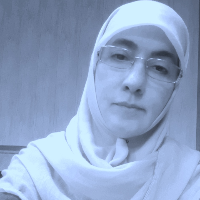The Relation between Character Development in Typeface Design with Typical & Aesthetic Characteristics
Author(s):
Article Type:
Research/Original Article (دارای رتبه معتبر)
Abstract:
Typography is an essential tool in visual communication and thus, selecting the appropriate typeface is crucial to express and convey a message. Perhaps using the word ‘character’ in the field of typeface and typeface design seems a bit odd and weird; but in fact just like human beings, fonts and their numerous forms can take on various characters such as ‘childish’, ‘female’, ‘male’, ‘kind’, ‘upset’, etc. Such character development for typefaces and recognizing them can help significantly to the design and use of Persian fonts. Since most of the studies conducted in the field of typeface design focus on legibility, less attention has been paid to other features. This is the main reason behind the current latency or even regression in designing new functional fonts and their optimal use. Therefore, there is a necessity for conducting a research to better recognize the characteristic of typefaces as per their typographical and aesthetic features. In this regard, the paper at hand focuses on the visual expression of typefaces and their designing features. One of the main features that distinguish this research from others in the field of designing Persian fonts is conducting field studies and the use of statistical analysis according to the data obtained for the recognition and classification of various font characters. Consequently, pre-planned questionnaires were distributed among the residents of Larestan as well as the students of Islamic University of Yazd taking into account a series of criteria such as: gender, age, education and etc. Out of approximately 100 questionnaires circulated, 90 individuals responded voluntarily and this number of participants may reflect high precision in calculations. Likewise, from among the most popular typefaces used in various forms of media such as newspapers, books, websites and etc., 50 ones were chosen out of which 18 were classified in different groups as per criteria such as: abiding by the rules of traditional calligraphy, being monoline, regular or irregular and etc.Ultimately, considering some personality traits such as: legible, happy, creative, attractive, slipshod, calm, friendly and self-confident, 14 typefaces were divided in four particular groups. Then aiming to identify typeface design characteristics of Persian fonts considering their unique features, their typographical and aesthetic features were examined separately first collectively then individually. The typographical features included: legibility, X-height proportion, ascender and descender proportions, typeface weight and etc. The aesthetic characteristics comprised of: details, elaborateness, nature of fonts and harmony on each of which this study shall comment scientifically and statistically. The result of the statistical analysis as well as the structural, typographical and aesthetic analysis of the typefaces and studying the results in association to the other indicated the existence of a relationship between character development in typeface design as well as typographical and aesthetic features, some of which are briefly as follows: 1. The larger in ascender, the smaller in descender and lighter in weight, the resulting typefaces will be more legible. 2. Heavy weight is the most important and most prominent element leading to the emergence of typefaces possessing ‘explicit and decisive’ character; while they share commonalities with that of legible characters in other typographical and aesthetic features. 3. To create a ‘happy’ typeface, the X-height and ascender should be larger with the descender as smaller as possible. Considering the above points one could realize that factors such as X-height, ascender and descender can greatly affect the development of numerous, various typeface characters. Therefore, according to the results achieved, one can contribute to the creation of more beautiful fonts to be used in different visual media through better identification of the characters and their proper use. Hopefully, through providing a fresh approach towards the recognition and identification of different typeface characteristics, this research could assist those interested in typeface design creation contribute to the completion of this study and employ their own creativities and innovations to better serve the field of designing functional, Persian fonts.
Language:
Persian
Published:
Journal of Theoretical principles of Visual Arts, Volume:1 Issue: 2, 2017
Pages:
71 to 82
magiran.com/p2021743
دانلود و مطالعه متن این مقاله با یکی از روشهای زیر امکان پذیر است:
اشتراک شخصی
با عضویت و پرداخت آنلاین حق اشتراک یکساله به مبلغ 1,390,000ريال میتوانید 70 عنوان مطلب دانلود کنید!
اشتراک سازمانی
به کتابخانه دانشگاه یا محل کار خود پیشنهاد کنید تا اشتراک سازمانی این پایگاه را برای دسترسی نامحدود همه کاربران به متن مطالب تهیه نمایند!
توجه!
- حق عضویت دریافتی صرف حمایت از نشریات عضو و نگهداری، تکمیل و توسعه مگیران میشود.
- پرداخت حق اشتراک و دانلود مقالات اجازه بازنشر آن در سایر رسانههای چاپی و دیجیتال را به کاربر نمیدهد.
In order to view content subscription is required
Personal subscription
Subscribe magiran.com for 70 € euros via PayPal and download 70 articles during a year.
Organization subscription
Please contact us to subscribe your university or library for unlimited access!



